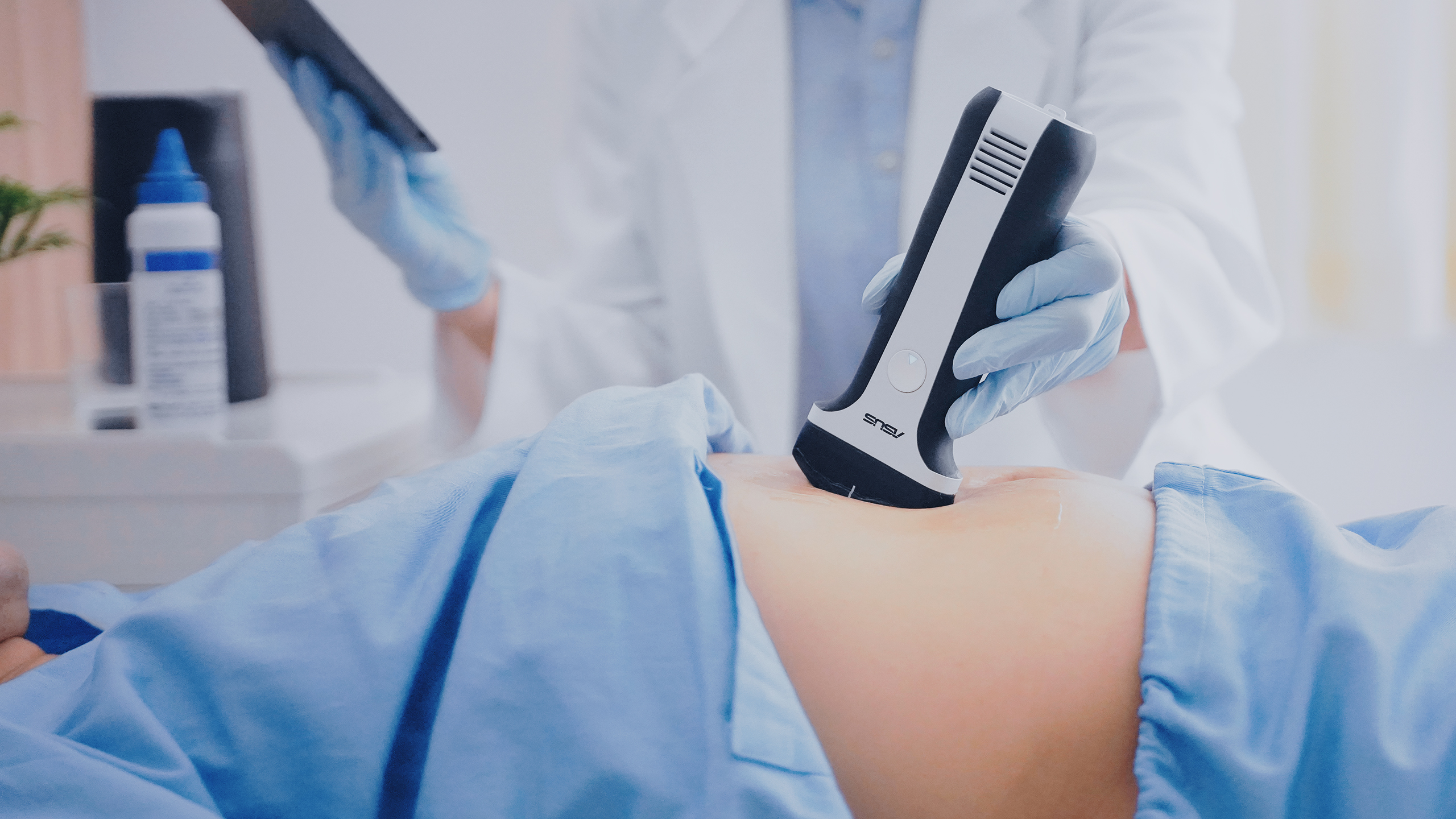ASUS Handheld Ultrasound LU700 series: lightweight, high resolution and long battery life solution for mobile healthcare
Providing health workers with light and handy portable devices is becoming a key strategy for service improvement in the healthcare industry. ASUS has already developed a complete product roadmap in this field through its longstanding investment in smart healthcare. The recently released LU700/LU710 series of handheld ultrasound products in particular realizes the vision of mobile healthcare providing physicians with a lightweight, high resolution, and long battery life scanning solution suitable for a wide range of scenarios.
Ultrasound is an indispensable medical imaging instrument for hospitals. The ASUS LU700/LU710 handheld ultrasound is a light, compact, wireless, and full-featured solution with 5 different probes that make Point-of-Care Ultrasound (POCUS) a reality. Health workers can now perform an ultrasound examination on patients in different medical scenarios such as the ambulance, emergency room, outpatient clinic, disaster area, or rural area to ensure they receive the best care. The improvement in treatment efficiency allows for the optimization of medical resources.
Joe Hsieh, ASUS COO and Global Senior VP, said that medical resources and the time of people seeking treatment are both very valuable. In most outpatient clinics, patients must queue separately for an ultrasound exam. If every physician conducting outpatient clinics is equipped with an ASUS handheld ultrasound unit, they can be scanned during the consultation. This translates into great savings in treatment time and optimization of medical resources. The rapidly aging population of Taiwan means that ASUS handheld ultrasound units can also be in rural scenarios such as medical treatment, home care, and community care.
The ASUS LU700/LU710 handheld wireless ultrasound unit incorporates several features designed for the requirements of the above healthcare scenarios including wireless lightweight design, long endurance, as well as support for the four major operating systems (iOS, Android, Windows, ChromeOS). The five probe types (Convex, Linear, Microconvex, Phased Array, Endocavity) satisfy the scanning requirements for most parts of the body. The product's innovative design has lent itself to a variety of applications. For example, ASUS partnered with the Yun-Lin Branch of National Taiwan University Hospital and the Yunlin County Government to make improvements to the first-aid process. Paramedics can now use the ASUS handheld ultrasound device to examine patients as they are being transported by ambulance to the emergency room. The ultrasound imagery is transmitted over 5G to the remote emergency room so that a physician can oversee the first-aid treatment. Once the patient arrives at the hospital, the physicians already have a full picture of the patient's condition. The seamless transfer of the patient greatly improves their chances of recovery.
Another example is the regional healthcare services of the South-Link Medical Foundation. Rural physicians can now use the ASUS handheld ultrasound solution to provide local people with better treatment and diagnosis. Home visits and tele-consultations have been conducted by physicians working with the Foundation to improve the quality of rural care.
Large hospitals have also used ASUS handheld ultrasound units to provide rural healthcare services. Shuang Ho Hospital and the Bureau of Health and Welfare, Lienchiang County formed a strategic alliance this year to dispatch health teams to Matsu. The lightweight and convenience of ASUS handheld ultrasound units were exploited by physicians to conduct carotid artery screening for local residents and safeguard public health.
Hsieh noted that rural regions, islands, and ambulances are just some of the application scenarios for ASUS handheld ultrasound units. The convenience and high-quality imagery provided by the conduct meet the clinical requirements of many other scenarios as well. He then emphasized that ASUS handheld ultrasound units complement rather than replace large ultrasound instruments. Providing health workers with more options and more suitable tools has always been the goal of ASUS investment in the healthcare sector. ASUS has now completed development on the second generation of handheld ultrasound products. The 128-channel design of the new product will provide better image quality. The advanced AI-assistance function will be an invaluable aid for health workers. The product will allow hospitals to make further improvements to their mobile healthcare services.

ASUS Handheld Ultrasound LU700 Series combines wireless portability with long battery life and supports multiple operating systems. It has been applied in various fields, including ambulance services and healthcare in remote areas.

